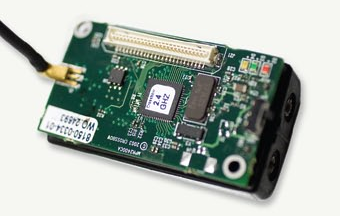Wireless sensor networks (WSNs) are indispensable to modern life. They monitor the temperature and depth of permafrost in the Swiss Alps, regulate traffic on highways and make it possible to track a person’s pulse rate and other vital signals remotely
In a WSN, battery-powered nodes containing radio transceivers and CPUs are embedded in the environment to sense and process data and transmit it to a base station, where data is interpreted and a response determined. Data can be transmitted from each node directly to the base station or along a chain of nodes to the base station, in what is called a “multihop” topology. The batteries that power WSN nodes, says Liang Cheng, consume a growing amount of energy, much of which could be saved by optimizing a network’s configuration.
Cheng, an associate professor of computer science and engineering, is principal investigator in an NSF-funded project to develop smarter, more energy-efficient topologies for multihop wireless networks, including WSNs.
“Topology control,” says Cheng, “involves placing and connecting WSN nodes in strategic locations with optimal powers so that total energy consumption – the energy required to do the computation and to transmit data – is minimized without affecting performance.”
About 80 percent of the energy consumed by a WSN, says Cheng, is used for data transmission. The remainder is used for data processing by nodes in the network.
“We want to see if we can reduce the amount of data transmitted to the base station by determining which data is vital and needs to be transmitted, and which is not. If you are trying to transmit too much data, you consume too much energy.
“To make this determination, more data processing has to be done by the nodes. The overall goal is to transmit as much data using as little energy as possible in a multihop network with reduced interference and higher capacity in the presence of multipath fading, link failures, high error rates and many other radio irregularities.”
In another NSF project, Cheng is collaborating with Sibel Pamukcu, professor of civil and environmental engineering, to develop WSNs that identify the properties of soil and other subsurface media while monitoring landslides, chemical spills and other geo-events, and the direction and flow rate of spills.
A wired sensor network can sense only those events occurring in the areas local to the fibers connecting the network, says Cheng, but a WSN is not similarly constrained.
“One of the questions we’re hoping to answer is how far apart the sensors can be and still yield useful data.”

